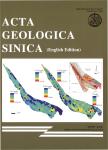Geochemistry and Zircon U-Pb Dates of Felsic-Intermediate Members of the Late Cretaceous Yüksekova Arc Basin: Constraints on the Evolution of the Bitlis–Zagros Branch of Neotethys(Elazig, E Turkey)
Geochemistry and Zircon U-Pb Dates of Felsic-Intermediate Members of the Late Cretaceous Yüksekova Arc Basin: Constraints on the Evolution of the Bitlis–Zagros Branch of Neotethys(Elaz??, E Turkey)作者机构:Firat UniversityElazig 23119Turkey Middle East Technical UniversityAnkara 06800Turkey Dokuz Eylül UniversityIzmir 35270Turkey
出 版 物:《Acta Geologica Sinica(English Edition)》 (地质学报(英文版))
年 卷 期:2021年第95卷第4期
页 面:1199-1216页
核心收录:
学科分类:070902[理学-地球化学] 070903[理学-古生物学与地层学(含:古人类学)] 0709[理学-地质学] 0819[工学-矿业工程] 07[理学] 0818[工学-地质资源与地质工程] 0708[理学-地球物理学] 0816[工学-测绘科学与技术]
主 题:petrography geochronology felsic magmatism multiple subduction Yüksekova arc basin Neotethys Turkey
摘 要:During the Late Cretaceous in the Eastern Mediterranean, the northern branch of the southern Neotethys was closed by multiple northward subductions. Of these, the most northerly located subduction created the Baskil continental arc at around 82–84 Ma. The more southerly and intra-oceanic subduction, on the other hand, produced an arc-basin system,the Yüksekova Complex, as early as the late Cenomanian–early Turonian. The abundant and relatively well-studied basaltic rocks of this complex were intruded by dykes, sills and small stocks of felsic–intermediate rocks, not previously studied in detail. The intrusives collected from five different localities in the Elazig region of eastern Turkey are all subalkaline, with low Nb/Y values. Most of them have been chemically classified as rhyodacites/dacites, whereas a small number appear to be andesites. In normal mid-ocean-ridge basalt(N-MORB)-normalised plots, the intrusives are characterised by relative enrichments in Th and La over Nb, Zr, Hf, Ti and high field strength elements(HREEs), indicating their derivation from a subduction-modified source. While their relatively high, positive εN d(i) values(+6.4 and +7.2) might suggest a depleted mantle source for their ultimate origin, somewhat radiogenic Pb values indicate a sedimentary contribution to the source of the rocks. The overall geochemical characteristics indicate their generation in an oceanic arc setting. The zircon U-Pb Laser ablation-inductively coupled plasma-mass spectrometry(LA-ICP-MS) data obtained from five felsic-intermediate rock samples yielded intrusion dates of 80–88 Ma. This suggests that the Elazig oceanic arc-related intrusives are slightly younger than those of the Yüksekova arc-basin system, but coeval with the Baskil continental arc. However, the felsic–intermediate intrusives show different geochemical characteristics(oceanic arc-type, with a lack of crustal contamination)to those of the Baskil continental arc. This indicates that these two igne



